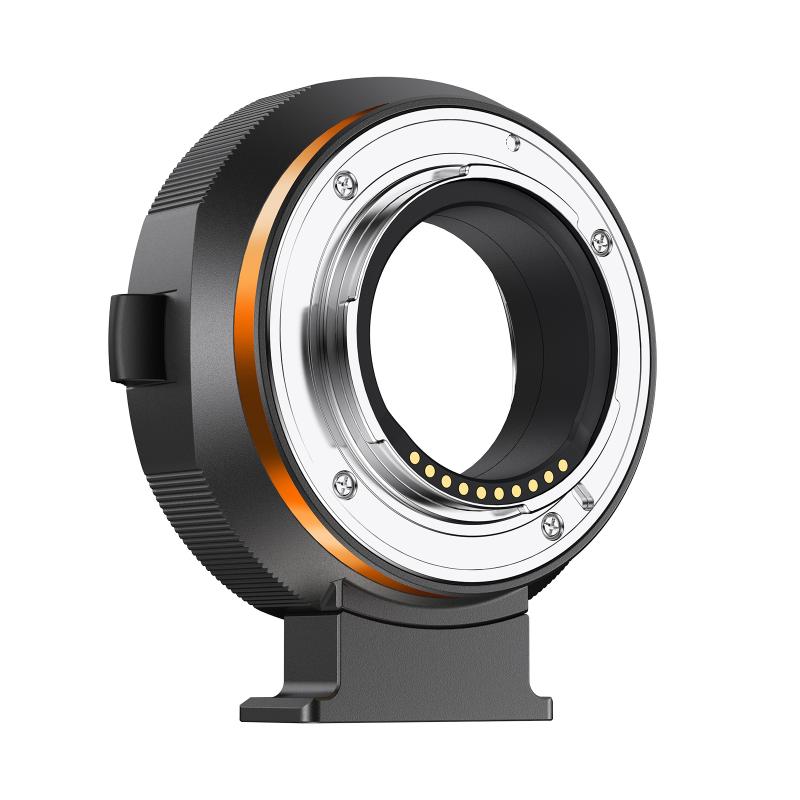What Are The Advantages Of An Electron Microscope ?
The advantages of an electron microscope include its high resolution, which allows for the visualization of extremely small objects and details at the atomic level. It also provides a greater depth of field compared to optical microscopes, allowing for the examination of three-dimensional structures. Additionally, electron microscopes have a higher magnification capability, enabling the study of samples at much higher levels of magnification. They can also be used to analyze a wide range of materials, including biological samples, metals, ceramics, and polymers. Furthermore, electron microscopes offer the ability to observe dynamic processes in real-time using techniques such as electron tomography and scanning electron microscopy.
1、 Higher resolution for detailed imaging of small structures.
The advantages of an electron microscope are numerous, with one of the most significant being its ability to provide higher resolution for detailed imaging of small structures. Unlike traditional light microscopes, which use visible light to illuminate specimens, electron microscopes use a beam of electrons to create an image. This allows for much greater magnification and resolution, enabling scientists to observe and study structures at the nanoscale level.
The higher resolution of electron microscopes is particularly advantageous when studying biological samples, such as cells and tissues. It allows researchers to visualize and analyze intricate details of cellular structures, such as organelles, membranes, and even individual molecules. This level of detail is crucial for understanding the inner workings of cells and unraveling complex biological processes.
Moreover, electron microscopes have the ability to reveal the three-dimensional structure of specimens. By tilting the sample and capturing images from different angles, scientists can reconstruct a 3D model of the object being studied. This is especially valuable in fields like materials science, where understanding the structure and arrangement of atoms is essential for developing new materials with specific properties.
In recent years, advancements in electron microscopy techniques have further expanded the capabilities of these instruments. For instance, cryo-electron microscopy (cryo-EM) has revolutionized the field of structural biology by allowing scientists to visualize biomolecules in their native state. This technique involves freezing the sample in a thin layer of ice, which preserves its structure and minimizes artifacts. Cryo-EM has been instrumental in determining the structures of complex proteins and protein complexes, leading to breakthroughs in drug discovery and understanding disease mechanisms.
In conclusion, the advantages of electron microscopes, such as higher resolution and the ability to visualize small structures in great detail, have made them indispensable tools in various scientific disciplines. With ongoing advancements in technology, electron microscopy continues to push the boundaries of our understanding of the microscopic world.

2、 Ability to visualize objects at nanoscale.
The electron microscope is a powerful tool that has revolutionized the field of microscopy. One of the major advantages of an electron microscope is its ability to visualize objects at the nanoscale. Unlike traditional light microscopes, which are limited by the wavelength of visible light, electron microscopes use a beam of electrons to create images with much higher resolution.
The high resolution of electron microscopes allows scientists to study the fine details of a wide range of materials and biological specimens. This has led to numerous advancements in various fields, including materials science, nanotechnology, and biology. For example, electron microscopes have been instrumental in the development of new materials with unique properties, such as carbon nanotubes and graphene. They have also been used to study the structure and function of biological molecules, leading to a better understanding of diseases and the development of new drugs.
In addition to high resolution, electron microscopes offer other advantages over traditional microscopes. They have a much greater depth of field, meaning that objects at different depths can be in focus simultaneously. This is particularly useful when studying three-dimensional structures. Electron microscopes also have a higher magnification range, allowing scientists to examine objects at much higher magnifications than with light microscopes.
Furthermore, recent advancements in electron microscopy technology have further enhanced its capabilities. For instance, the development of scanning transmission electron microscopy (STEM) has enabled researchers to not only visualize objects at the nanoscale but also to analyze their chemical composition. This has opened up new possibilities for studying materials and biological samples in unprecedented detail.
In conclusion, the advantages of an electron microscope, such as its ability to visualize objects at the nanoscale, have greatly contributed to scientific advancements in various fields. With ongoing technological advancements, electron microscopy continues to push the boundaries of what is possible in the world of microscopy and offers exciting prospects for future discoveries.

3、 Enhanced depth of field for 3D imaging.
One of the major advantages of an electron microscope is its enhanced depth of field for 3D imaging. Unlike traditional light microscopes, electron microscopes use a beam of electrons instead of light to magnify and visualize samples. This allows for a much higher resolution and greater depth of field, resulting in highly detailed and three-dimensional images.
The enhanced depth of field provided by electron microscopes is particularly beneficial in various scientific fields. For example, in biology and medicine, electron microscopes can be used to study the intricate structures of cells, tissues, and organs. The ability to visualize these structures in three dimensions provides valuable insights into their organization and function, aiding in the understanding of biological processes and diseases.
In materials science, electron microscopes are indispensable for examining the microstructure of materials at the atomic and nanoscale level. This is crucial for understanding the properties and behavior of materials, such as their strength, conductivity, and magnetic properties. The enhanced depth of field allows researchers to observe the intricate details of material surfaces, interfaces, and defects, enabling the development of new and improved materials for various applications.
Moreover, the enhanced depth of field in electron microscopy has been further improved with advancements in technology. For instance, the development of scanning electron microscopes (SEM) with advanced detectors and software algorithms has enabled the reconstruction of three-dimensional images from a series of two-dimensional images. This technique, known as electron tomography, has revolutionized the field by providing detailed 3D information about the internal structure of samples.
In conclusion, the enhanced depth of field provided by electron microscopes is a significant advantage that allows for detailed and three-dimensional imaging. This capability has numerous applications in various scientific fields, including biology, medicine, and materials science. With ongoing advancements in technology, electron microscopy continues to play a crucial role in expanding our understanding of the microscopic world.

4、 Capable of imaging non-conductive samples.
The advantages of an electron microscope are numerous, making it an invaluable tool in various scientific fields. One significant advantage is its ability to image non-conductive samples. Unlike traditional light microscopes, which rely on the interaction of light with the sample, electron microscopes use a beam of electrons to create an image. This allows for the imaging of non-conductive materials such as ceramics, polymers, and biological samples without the need for special preparation techniques like coating with conductive materials.
The capability to image non-conductive samples is particularly crucial in the field of materials science. Many advanced materials used in industries such as electronics, aerospace, and medicine are non-conductive. Electron microscopes enable researchers to study the microstructure and composition of these materials at high resolution, providing valuable insights into their properties and behavior.
Moreover, electron microscopes offer exceptional resolution compared to light microscopes. With the latest advancements in technology, modern electron microscopes can achieve resolutions down to the atomic level. This level of detail allows scientists to observe and analyze the fine structures of materials, including individual atoms and molecules. It has revolutionized fields like nanotechnology, where precise characterization of nanoscale structures is essential.
Another advantage of electron microscopes is their ability to provide three-dimensional imaging. By tilting the sample and capturing multiple images from different angles, researchers can reconstruct a three-dimensional representation of the sample. This is particularly useful in studying complex biological structures, such as cells and tissues, as it allows for a better understanding of their organization and interactions.
In conclusion, the capability of electron microscopes to image non-conductive samples is a significant advantage that has revolutionized various scientific fields. With their exceptional resolution and ability to provide three-dimensional imaging, electron microscopes continue to push the boundaries of scientific discovery and contribute to advancements in materials science, nanotechnology, and biology.







































